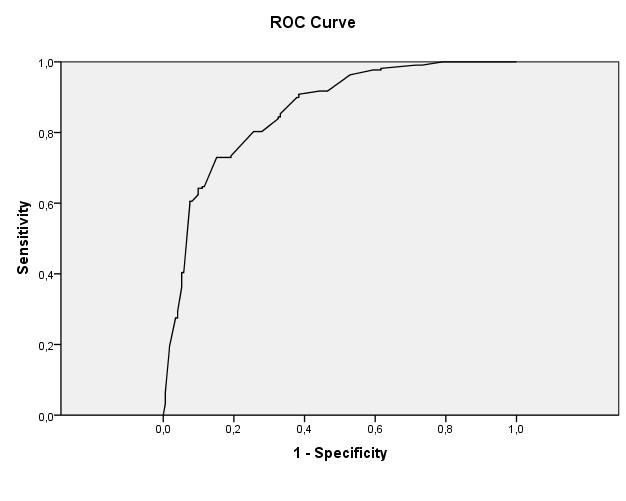Session Information
Session Type: Abstract Submissions (ACR)
Background/Purpose: The gold standard to diagnose gout is the identification of monosodium urate (MSU) crystals in joint fluid. In primary care gout is mostly diagnosed clinically without joint fluid analysis. However, this clinical diagnosis of gout has a positive and negative predictive value of 0.64 and 0.87, respectively.1 To improve the clinical diagnosis of gout a diagnostic rule has been developed in a primary care population.1 The aim of this study is to validate this diagnostic rule in a secondary care population. Methods: In this validation study adult patients who were referred to the rheumatology department from 1 January 2011 until 8 May 2013 with signs and symptoms of monoarthritis at their first visit and who conceivably could have gout were included. The affected joint was aspirated and joint fluid analysis was performed for the presence of MSU crystals. The seven variables of the diagnostic rule (male sex, previous patient-reported arthritis attack, onset within one day, joint redness, first metatarsophalangeal joint involvement, hypertension or one or more cardiovascular diseases, and serum uric acid >0.35 mmol/L) were collected and scored without knowledge of the joint fluid analysis result. The performance of the diagnostic rule was compared to the presence of MSU crystals. Results: 390 patients were included in this study. In 218 (56%) patients MSU crystals were found. As confirmed by the presence of MSU crystals, the prevalences of gout at the cut-off scores ≤4, >4 to <8, and ≥8 points were 6% (4 of 69), 46% (76 of 163), and 88% (138 of 157), respectively. The area under the receiver operator characteristic curve for the diagnostic rule was 0.85 (figure 1). The Hosmer-Lemeshow goodness-of-fit test showed that the difference between the expected and the observed probability was non-significant (p=0.64), indicating well agreement. Conclusion: The diagnostic rule to diagnose gout without joint fluid analysis, which was developed in a primary care population, has a good performance in a secondary care population. References: 1H.J.E.M. Janssens, et al. A diagnostic rule for acute gouty arthritis in primary care without joint fluid analysis, Arch Intern Med. 2010; 170(13):1120-6.
Disclosure:
L. Kienhorst,
None;
H. Janssens,
None;
J. Fransen,
None;
M. Janssen,
None.
« Back to 2013 ACR/ARHP Annual Meeting
ACR Meeting Abstracts - https://acrabstracts.org/abstract/the-performance-of-a-diagnostic-rule-for-acute-gouty-arthritis-without-joint-fluid-analysis-a-validation-study/

